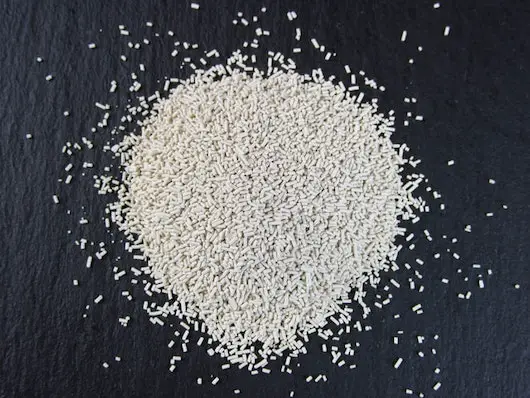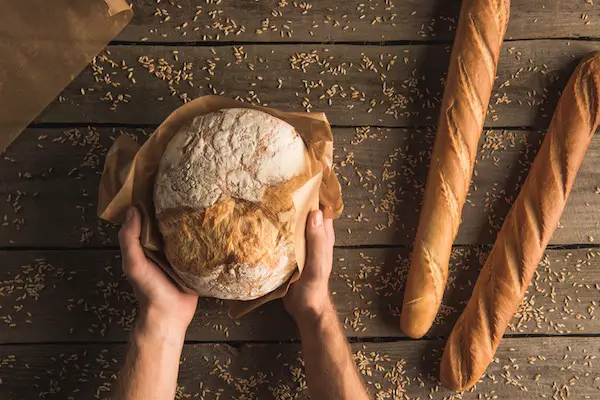A big factor behind what makes bread …well….bread is the use of yeast. And there is a bit to it.
So let’s dive into what types of yeast are used for bread making and what each type can do for your loaf.

When it comes to dry yeast, there are 2 kind: instant yeast and regular active dry yeast.
These can be used alternately depending on what kind of bread you want to make. You’ll see that as you adjust the yeast you use, the characteristics of the bread also changes too. Pretty cool.
Disclaimer: some links used in this post are affiliate links, which means I will earn a small commission if you purchase using my provided links at no extra cost to you. I only recommend products I think will be helpful to you and bring you one step closer to creating tasty bread masterpieces!
Active Dry Yeast
Active dry yeast, also known as compressed yeast or cake yeast, has a few different properties compared to instant yeast.
Active dry yeast has a larger particle size, which means it’ll need to be proofed with water before using for baking. The recommended water temperatures will change depending on the manufacturer, although it’s usually between 100 to 115 degrees F.
Anthony’s active dry yeast is one of our favorite yeasts we like to use for making our bread dough – and it’s a highly rated product lots of other bakers love using too.

You can store active dry yeast longer (about 1 year) if not opened at room temperature. It will also have a longer shelf life if frozen.
Some measurements to keep in mind:
- 1 package of dry active yeast = ~ 1/4 ounce or 2.25 teaspoons.
- A 4-ounce jar of active dry yeast = 14 tablespoons.
- 1 cube or cake of compressed yeast or fresh yeast = 1 package of active dry yeast.

You can put it directly inside the freezer in its vacuum sealed pack. What’s also nice is you can use active dry yeast straight out of the freezer without needing to thaw it.
Opened active dry yeast can keep longer than 6 months in the refrigerator and about 12 months inside the freezer.
You should store yeast in its original container with the open flap folded closed in a resealable plastic bag. It can lose its potency by 10% every month if only stored at room temperature and opened without some sort of container seal.
Instant yeast
Instant yeast is also called quick rise, rapid-rise, fast rising or bread machine yeast. This kind of yeast boosts rising time by almost half the time it takes for active dry yeast to help bread rise.
Instant yeast is ground more finely and can absorb moisture in a smaller amount of time; as a result, it does not need to be dissolved in water before use. Which means, you can just add instant yeast straight into the dry ingredients of your bread dough recipe.
Fleischmann’s instant dry yeast is a great ingredient to use with bread machines. Plus lots of bread bakers love to use this highly rated product too.

One thing to note though is any liquid needed for the making of bread dough should be warmed to about 120 to 130 degrees F. This will create a cozy environment for your yeast to take action.
Read more: How the Leavening Process Works
The bread recipe will only need one packet of instant dry active yeast to rise. The first rise is substituted by a 10-minute rest. You do not have to punch the dough in after. The second rise is after the dough is shaped into a loaf.
Once the yeast is incorporated into the dough, it quickly changes sugars and starch to carbon dioxide, which make the little bubbles that cause the dough to stretch and expand.
Some measurements to keep in mind:
- 1 envelope of instant yeast = 1.25 ounce or 2.25 teaspoons.
- 1 cube or cake of compressed yeast = 1.5 to 2 teaspoons of instant yeast.
- If you want to swap out active dry yeast for instant yeast, use 25% less instant yeast compared to active dry yeast.

